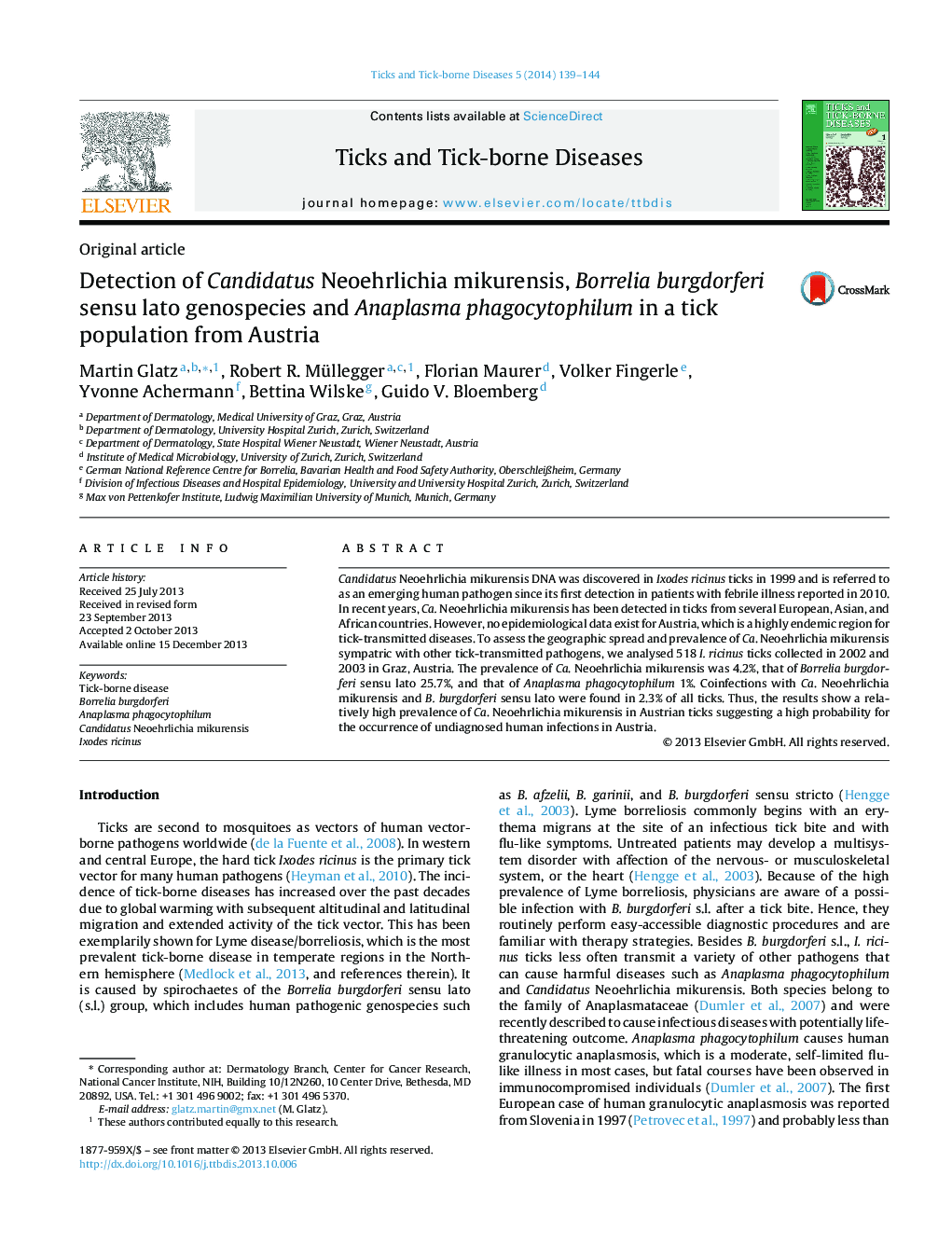| Article ID | Journal | Published Year | Pages | File Type |
|---|---|---|---|---|
| 5807165 | Ticks and Tick-borne Diseases | 2014 | 6 Pages |
Candidatus Neoehrlichia mikurensis DNA was discovered in Ixodes ricinus ticks in 1999 and is referred to as an emerging human pathogen since its first detection in patients with febrile illness reported in 2010. In recent years, Ca. Neoehrlichia mikurensis has been detected in ticks from several European, Asian, and African countries. However, no epidemiological data exist for Austria, which is a highly endemic region for tick-transmitted diseases. To assess the geographic spread and prevalence of Ca. Neoehrlichia mikurensis sympatric with other tick-transmitted pathogens, we analysed 518 I. ricinus ticks collected in 2002 and 2003 in Graz, Austria. The prevalence of Ca. Neoehrlichia mikurensis was 4.2%, that of Borrelia burgdorferi sensu lato 25.7%, and that of Anaplasma phagocytophilum 1%. Coinfections with Ca. Neoehrlichia mikurensis and B. burgdorferi sensu lato were found in 2.3% of all ticks. Thus, the results show a relatively high prevalence of Ca. Neoehrlichia mikurensis in Austrian ticks suggesting a high probability for the occurrence of undiagnosed human infections in Austria.
